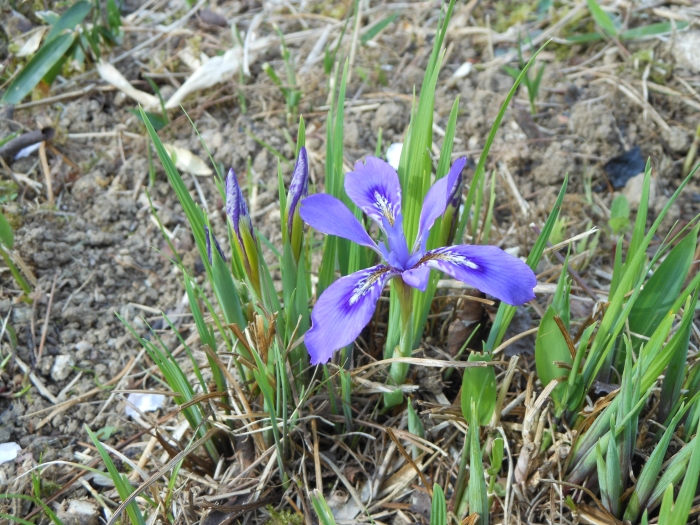Long-Tail Iris
(Iris rossii)
Long-Tail Iris (Iris rossii)
/
/

Pekachu
CC BY-SA 4.0
Image By:
Pekachu
Recorded By:
Copyright:
CC BY-SA 4.0
Copyright Notice:
Photo by: Pekachu | License Type: CC BY-SA 4.0 | License URL: https://creativecommons.org/licenses/by-sa/4.0 | Uploader: Pekachu | Publisher: Wikimedia Commons | Title: A_flower_and_buds_of_Iris_rossii_Baker_in_Kuboizumi_Saga.JPG | Notes: User created page with UploadWizard |















Estimated Native Range
Summary
Iris rossii, commonly known as Long-Tail Iris, is an evergreen perennial bulb native to forest margins, grassy slopes, and stream banks in East Asia, particularly in Korea and Japan. This species typically reaches a height of 0.3-0.5 feet and spreads 1-3 feet wide. The Long-Tail Iris is notable for its slender, grass-like foliage and its striking purple flowers that bloom in the spring and summer, adding a splash of color to the garden. The flowers are moderately showy, with each blossom featuring three long, drooping "falls" and three upright "standards," creating a distinctive appearance.
In cultivation, Long-Tail Iris is appreciated for its drought tolerance and suitability for xeriscaping, making it an excellent choice for water-conserving landscapes. It thrives in well-drained, nutrient-rich soils and can be used effectively in rock gardens and alpine scree slopes. While it prefers full sun, it can tolerate part shade, which provides flexibility in garden design. Its low water requirements and ability to adapt to various light conditions make it a low-maintenance option for gardeners. However, it is relatively rare in cultivation outside its native range. Gardeners should be aware that, despite its hardiness, it may be challenging to find in local nurseries.CC BY-SA 4.0
In cultivation, Long-Tail Iris is appreciated for its drought tolerance and suitability for xeriscaping, making it an excellent choice for water-conserving landscapes. It thrives in well-drained, nutrient-rich soils and can be used effectively in rock gardens and alpine scree slopes. While it prefers full sun, it can tolerate part shade, which provides flexibility in garden design. Its low water requirements and ability to adapt to various light conditions make it a low-maintenance option for gardeners. However, it is relatively rare in cultivation outside its native range. Gardeners should be aware that, despite its hardiness, it may be challenging to find in local nurseries.CC BY-SA 4.0
Plant Description
- Plant Type: Bulb
- Height: 0.3-0.5 feet
- Width: 1-2.5 feet
- Growth Rate: Moderate
- Flower Color: Purple
- Flowering Season: Spring, Summer
- Leaf Retention: Evergreen
Growth Requirements
- Sun: Full Sun, Part Shade
- Water: Medium, High
- Drainage: Medium
Common Uses
Bee Garden, Bird Garden, Butterfly Garden, Deer Resistant, Drought Tolerant, Hummingbird Garden, Low Maintenance, Rabbit Resistant, Showy Flowers
Natural Habitat
Forest margins, grassy slopes, and stream banks in East Asia
Other Names
Common Names: 각시붓꽃
Scientific Names: , Iris rossii, Iris rossii var. latifolia, Iris rossii f. alba, Iris iyoana, Iris rossii f. albiflora, Iris rossii f. latifolia, Iris rossii f. purpurascens, Iris rossii var. alba, Zhaoanthus rossii,
GBIF Accepted Name: Iris rossii Baker